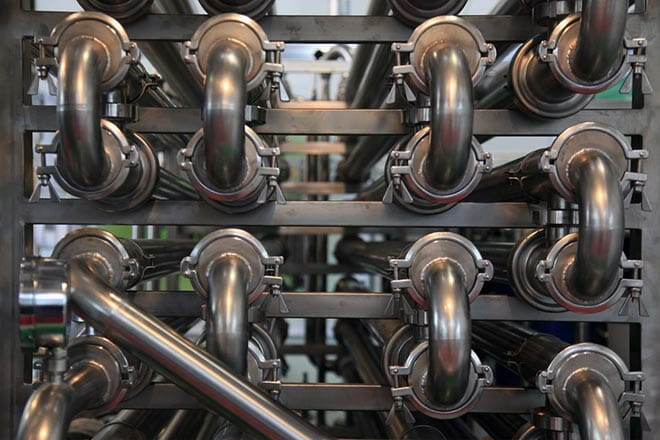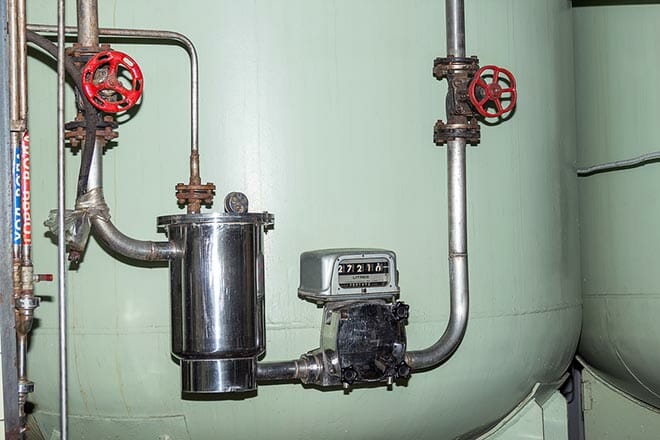In many ways, pumps used in food and beverage processing are the heart of the operation. They make sure material gets where it needs to go. But pumps are also like the liver. They help remove what’s unwanted. That function depends on wire cloth.
For pump manufacturers, the key to helping processors produce peak-quality products boils down to choosing the right wire for the application. It sounds simple enough, but there are some important factors to consider.

What’s the right metal to use for wire cloth?
Choosing the right wire cloth for an application can mean significant savings not only in costs but also in efficiency, which is really the same as money. A few considerations include:
- Particle size
- Pressure drop
- Temperature
- Flow rate
- Viscosity
- Specific gravity
- Corrosives and contaminants
Fortunately, the world of wire cloth has a diverse population, and there’s most likely a metal and a cloth weave type to meet the challenge. Any metal or metal alloy that can be woven is a candidate for a wire cloth solution.
For example, according to “Indispensable Wire Cloth for Industrial Processes” from Processing Magazine, wire cloth has been woven from “steel, stainless steel, copper, brass, Monel, aluminum, phosphor bronze, nickel, Nichrome, hastelloy and galvanized or tinned steel” as well as “noble, rare or refractory metals” and “gold and gold-plated metal, platinum, silver, tungsten, molybdenum, columbium, tantalum and titanium.
It’s a long list, and that’s good because the materials pumps send through the cloth vary widely in chemical content. The right wire cloth will withstand corrosive forces and help the pump provide a long and trouble-free service life.
What about the weave?
Wire cloth can be woven using metal strands that range in diameters from no larger than a human hair to a full inch. The “holes” in the weave that let matter pass through also can vary widely in size to accommodate a broad range of materials. The size of the “holes” determines the wire cloth mesh count.
Here are some of the wire cloth weaves commonly used in processing applications:
- Plain weave, also called double-crimp weave is used in most wire cloth. Unlike pre-crimping, plain weave crimping is a result of the weaving process itself.
- The pre-crimp weave method is most often used in coarser wire cloth. The wires are crimped before weaving occurs. Pre-crimping secures the wires so there is less movement and opening size remains consistent.
- Twill weave is used for heavier wire. The method allows the wire to be woven in a variety of mesh counts. Instead of one wire simply crossing over or under one other wire, each wire passes over and under two other wires during weaving.
- Plain Dutch weave allows wires of different diameters to be woven together. This procedure takes advantage of the strength of the heavier wire to support the lighter wire, which provides the filtration. One of the advantages of the Plain Dutch weave is that it provides lower pressure drops at high flow rates.

Things to think about when considering wire cloth
Wire cloth has some important advantages in pump filtration applications, including:
- Strength. Metals can be quite durable. They withstand cleaning by just about any method, from power washing to chemicals. As strong as it can be, metal tends to be relatively lightweight, and it offers little impediment to flow.
- Corrosion resistance. The right wire cloth made using the right metal will resist corrosion and provide a long service life. It’s critical to select the right metal for the job.
- Cost savings. Wire cloth is easy to maintain, offers a high level of performance and can last a long time. All these factors translate into higher efficiency and lower costs.
For more than 105 years, Newark Wire has specialized in fabricating standard and custom wire mesh products. Contact our company for more information about wire mesh and its applications in pump manufacturing for the food and beverage industry.
